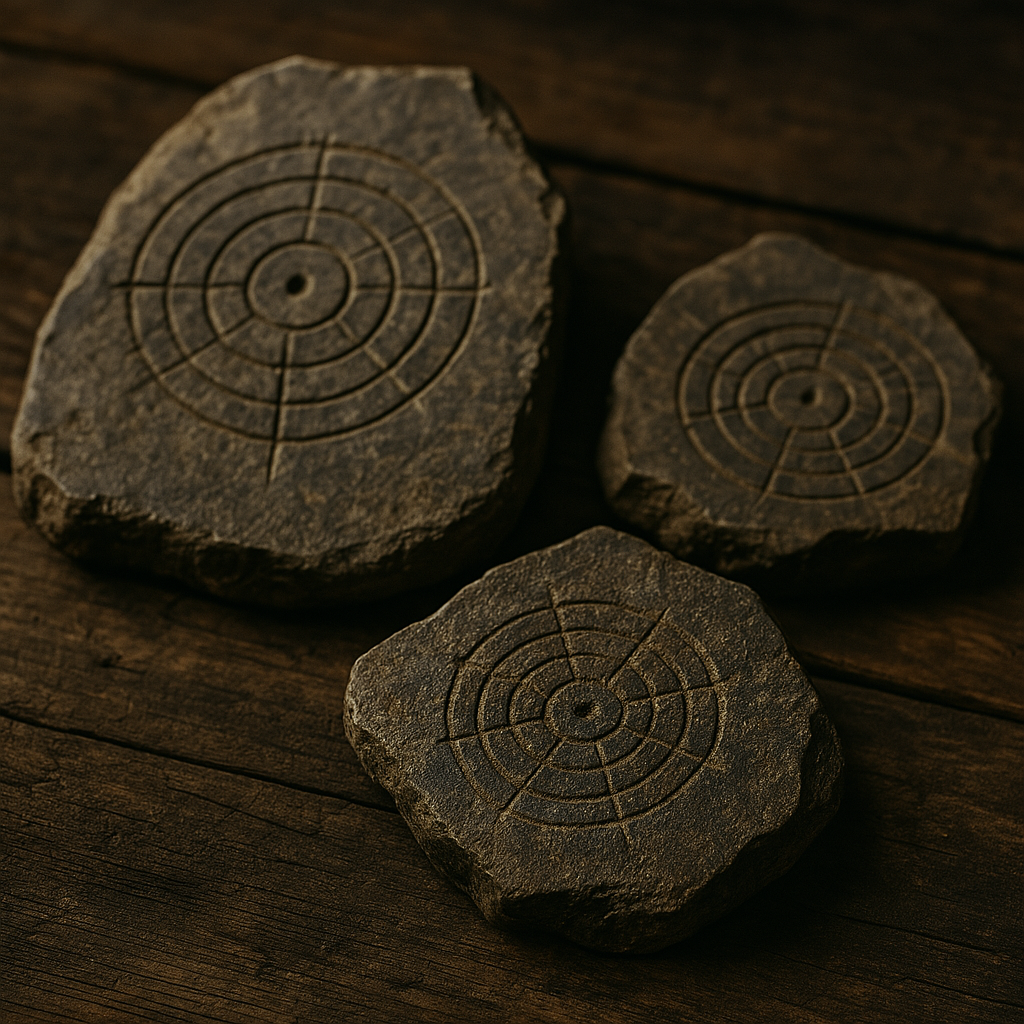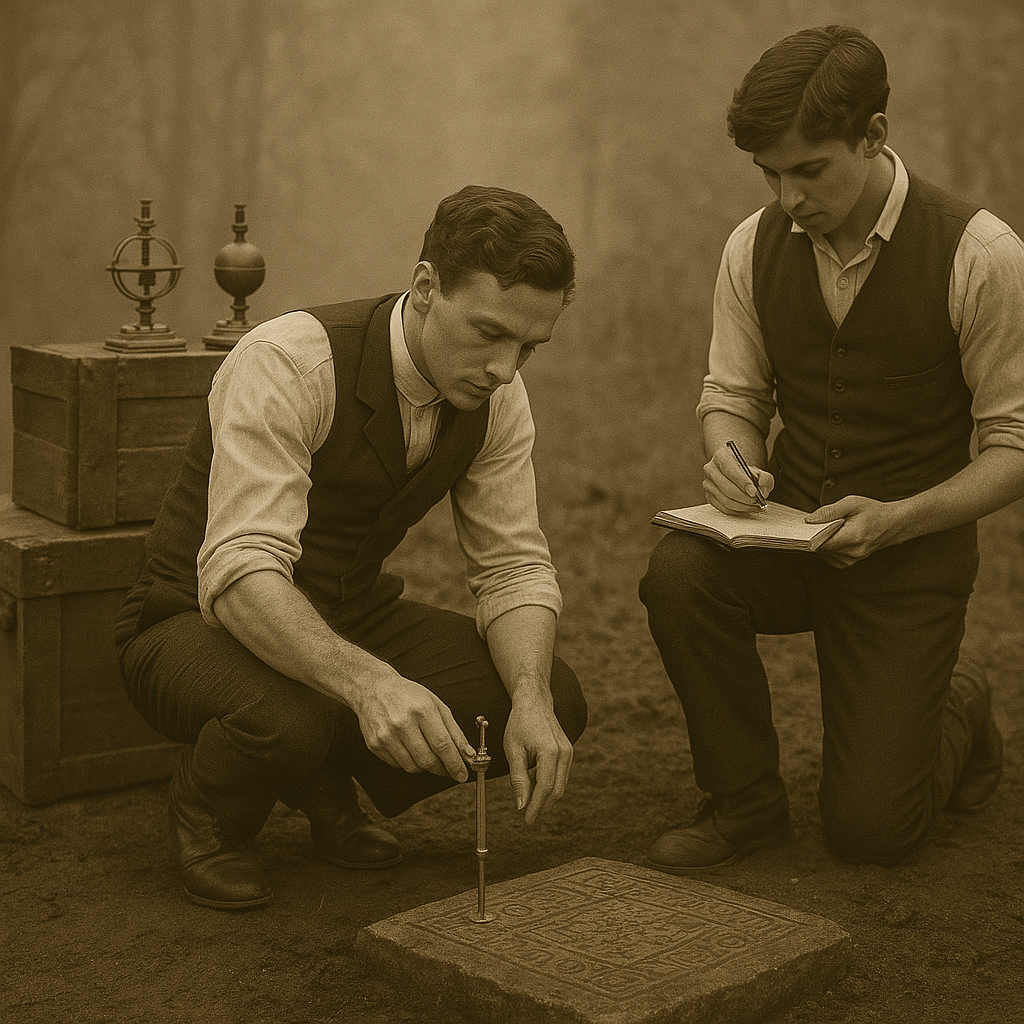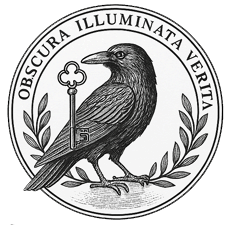The Signal Stone Tablets

This photograph captures three of the enigmatic Signal Stone Tablets, unearthed from the soil near the western garden quadrant of StormCroft in the early 20th century. Each tablet bears intricate, unfamiliar etchings that echo the structure of modern waveform data — despite predating any known audio encoding system.
Attempts to document the stones have resulted in mirrored distortions or corrupted negatives, leading researchers to speculate the carvings are not visual symbols, but spatial resonances — readable only by location and silence. One theory suggests the stones are a form of acoustic instruction, intended not for ears but for the building itself.
No two photos of the tablets have ever matched exactly.
Discovered—allegedly—in the soil near the Western Garden, these unclassified slabs are etched with geometries that resemble modern waveform data. No one has successfully translated the etchings. Attempts to photograph the stones result in blurred or mirrored images, even on modern equipment. Internal memos once described them as “instructions from the buried.”
“They weren’t buried. They were waiting.”
— Field Note, Clara Bevel, 1877
Discovery & Personnel Assigned
The Signal Stone Tablets were unearthed during trench work near the Western Garden Perimeter in Spring 1877. Initially mistaken for decorative masonry, the slabs were eventually identified as something else entirely — dense, flat stones embedded with impossibly fine etched symbols and acoustic patterning.
The team assigned to investigate them included:
-
Clara Bevel – First to sketch the symbols, noting how they seemed to “arrange themselves” depending on the time of day.
-
Dr. Abram Finch – Believed the stones were “non-aural data devices,” possibly storing information as vibration.
-
Simon Vallentine – Brought in from Bell Room operations to test resonance fields.
-
Aide #12 (Philip Darr) – Young assistant to Finch. Known to have handled the stones directly.
Observed Effects & Danger
Very quickly, the stones began exhibiting strange properties:
-
Photographic anomalies: Early plate photographs of the stones developed reversed, mirrored, or blurred — even when taken with fixed equipment. One image showed a face no one recognised in the stone’s reflection.
-
Auditory hallucinations: Anyone within three metres of the stones for more than five minutes began hearing faint clicking or fragmented human speech — usually in their own voice.
-
Memory interference: Finch reported losing chunks of recent memory. Bevel noted she had dreams of the symbols rearranging themselves into “commands she couldn’t understand but felt compelled to obey.”
-
Sympathetic mimicry: One experiment involved drawing a copy of a tablet symbol on paper. The stone surface altered slightly over 24 hours, matching the imitation.

This photograph captures a rare moment of collaboration between Simon Vallentine (left) and Aide #12, Philip Darr (right) during early resonance testing of the Signal Stone Tablets at StormCroft’s Western Perimeter Site.
Simon Vallentine
Born: 1843
Died: 1902 – Found unresponsive in Bell Room Annex, tone recorder still running.
Philip Darr (Aide #12)
Born: 1858
Died: 1884 – Whispered final phrase for days: “I am already written.”)
Simon Vallentine halted field tests after claiming the tablets were “transmitting through time.” He was reassigned to Bell dampener calibration.
Abandonment and Incident
The project was terminated in autumn 1877 after a key event involving Philip Darr, Aide #12.
He had been documenting vibrational tests — placing a tuning fork near the stones and recording frequencies — when he reportedly entered a semi-lucid state, repeating a single phrase for four hours:
“I am already written. I am already written. I am already written…”
He was hospitalised and later discharged under full mental blackout. He died in 1884, whispering the same phrase.
Finch filed a sealed memo recommending “absolute acoustic isolation” for the site. The stones were reburied under lime and quartz aggregate. The area was marked on internal maps as Zone Zero-A — with the annotation:
“No trespass. Resonant instability. Does not forget.”
Legacy and Remaining Traces
-
One photographic plate of a tablet fragment surfaced in 1932, hidden inside the spine of the Third Rail Book.
-
In 1969, Leo Fenner noted a CroftNet node receiving stone glyph-shaped packets of data with no origin.
-
A chalk outline of the largest slab was found drawn on the Bell Room ceiling in 1983. No one claimed responsibility.
(image: Vallentine, experienced in Bell Room harmonics, carefully observes the tuning response while Darr prepares etched tracings for replication. Their proximity to the stones was later cited in both men’s eventual psychological decline.
The image was filed under “Experimental – Zone Zero-A” and later marked Restricted – Unstable Influence.
